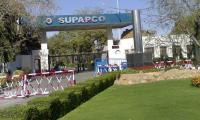DNC’s approach come from candidates seeking a debate boost. Sanders says it’s ‘imperative that we have as many debates as possible – certainly more than six’. O’Malley complains that the current schedule is “all about trying to preordain the outcome, circle the wagons, and close off debate”. Sanders and O’Malley both object to a DNC rule that says candidates who participate in unsanctioned debates can be barred from the DNC’s official events.
Reckless partisans may assume that a limited schedule will benefit the current front-runner, Hillary Clinton. But that’s a bad gamble. Of course, the DNC’s proposed schedule is rough for O’Malley, whose strategy depends on multiple debates to draw attention to a campaign that is serious but still polls in the single digits. It’s also rough for Sanders, who needs strong debate performances to build on the momentum of his double-digit poll numbers and rallies that have attracted tens of thousands. But a restricted debate schedule is bad for Clinton as well: She can’t keep ceding the limelight to Republicans, who devote so much of their time and energy to attacking her on everything from e-mails to economics.
Clinton can benefit from pressure from her fellow Democrats, both when it comes to countering criticisms – some petty, some serious – and when it comes to developing the populist message that voters want to hear.
The Democratic debates don’t have to be as theatrical as the GOP’s Trump-dominated affairs. But the DNC needs to get started sooner, and it needs to support more debates in more states. That’s good for all the candidates. And it’s good for democracy – especially in an increasingly unpredictable and volatile political season, when the discourse should not be dominated by a single party.
This article originally appeared as: ‘Since when are Democrats afraid of debates?’.
Courtesy: Commondreams.org
According to Chanakya, secret of strong nation lies in ability to protect its citizens
Rapid economic progress was made possible under Modi's leadership if not ‘Modi's guarantee’
Pakistan was considered water-abundant country, with per capita water availability being 5650 cubic meters in 1951
Shrine of Mian Mir.—TheNews/FileMy history professor once referred to a theory that says the developmental telos of...
If Pakistan does not take prompt and decisive action, it could find itself at forefront of world's first water conflict
Please note that dam survey team from World Bank had proposed building of this dam in 1955







